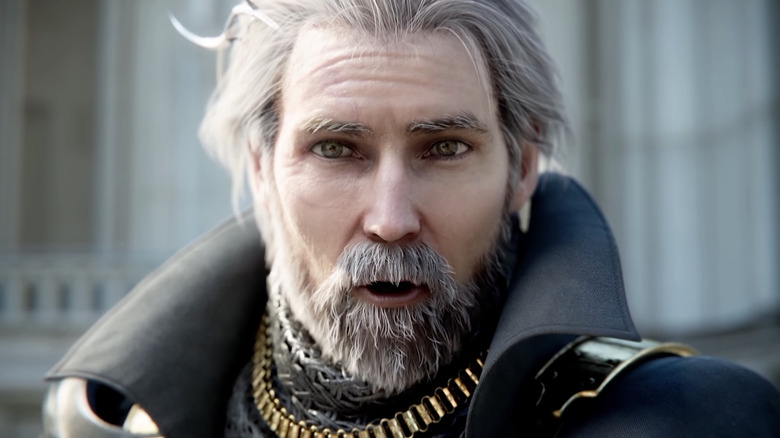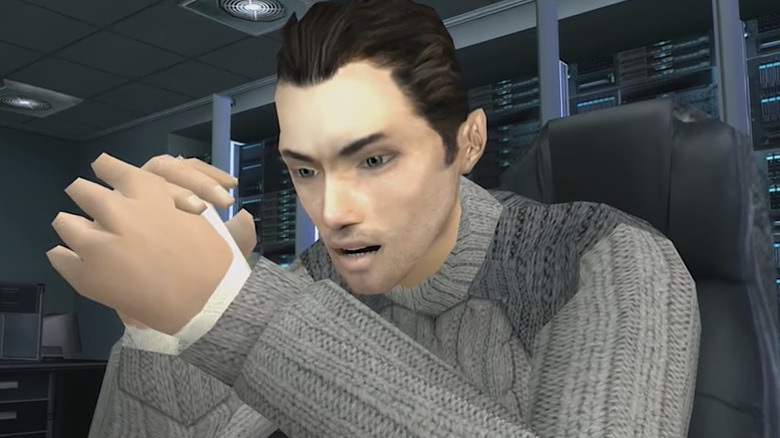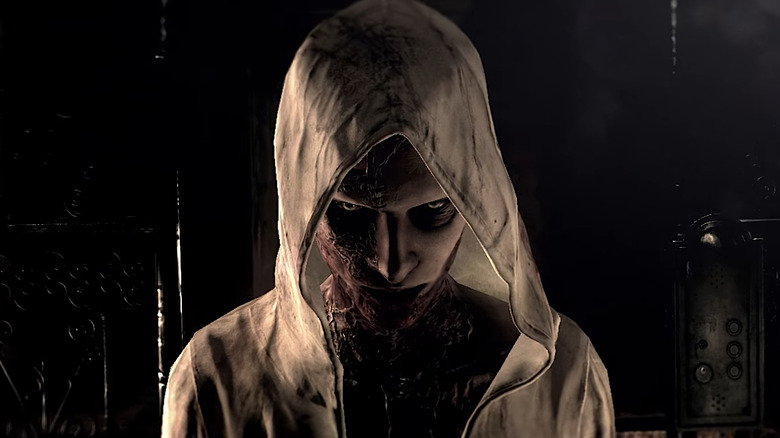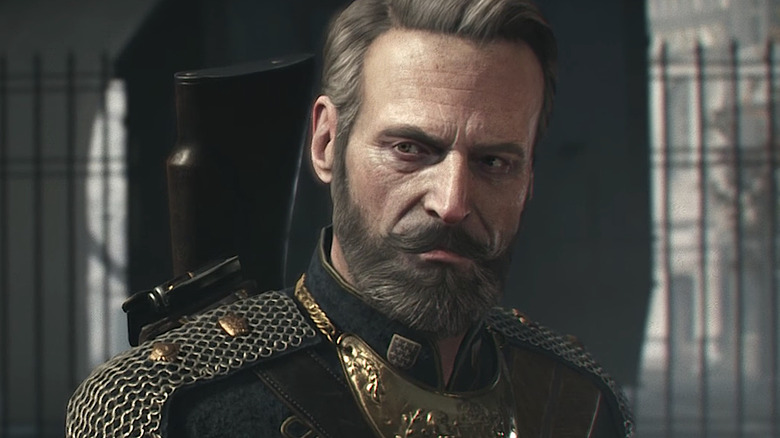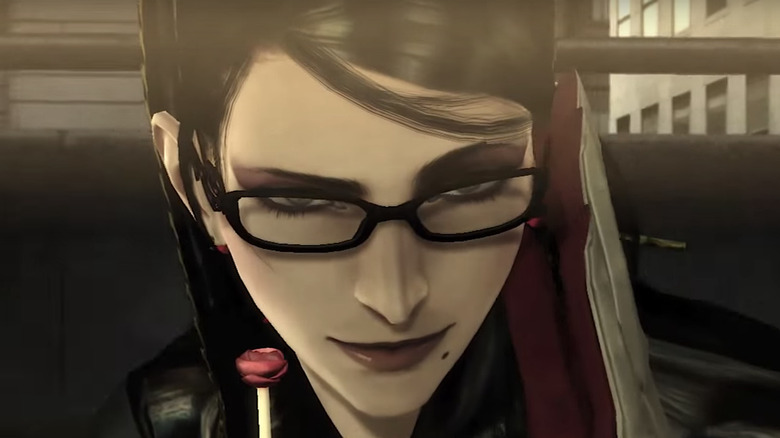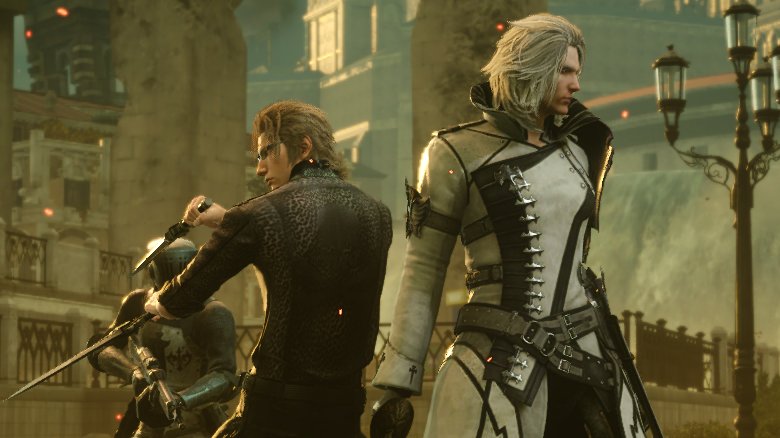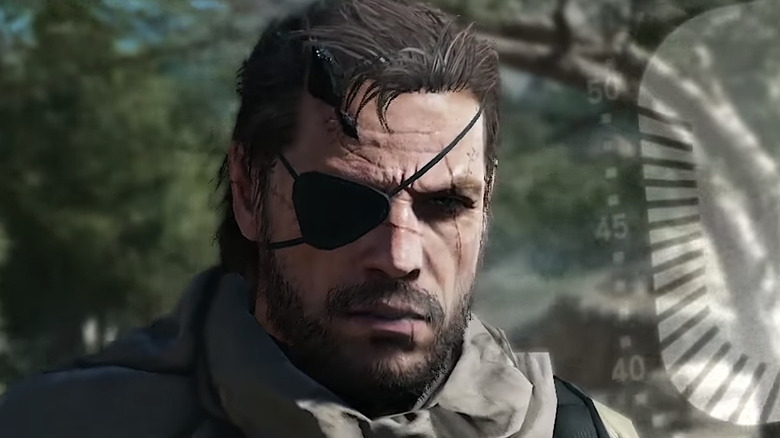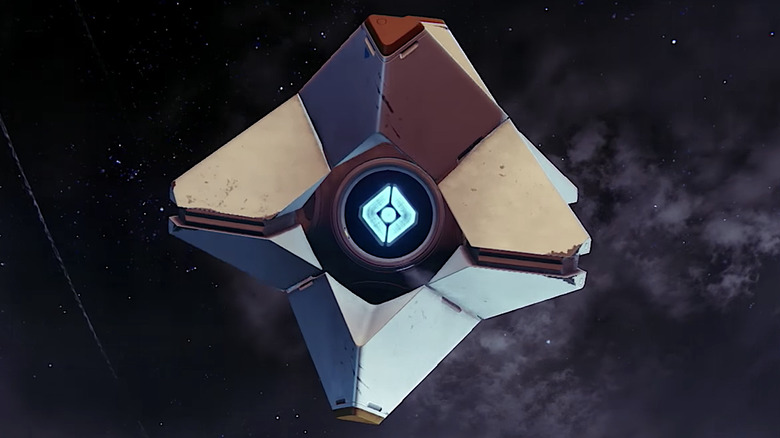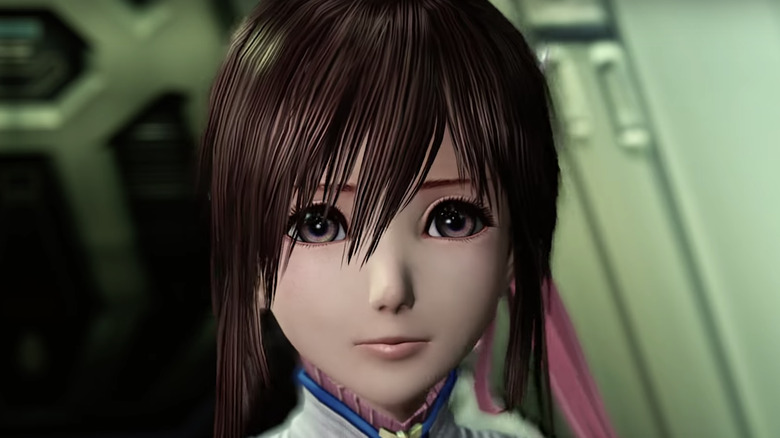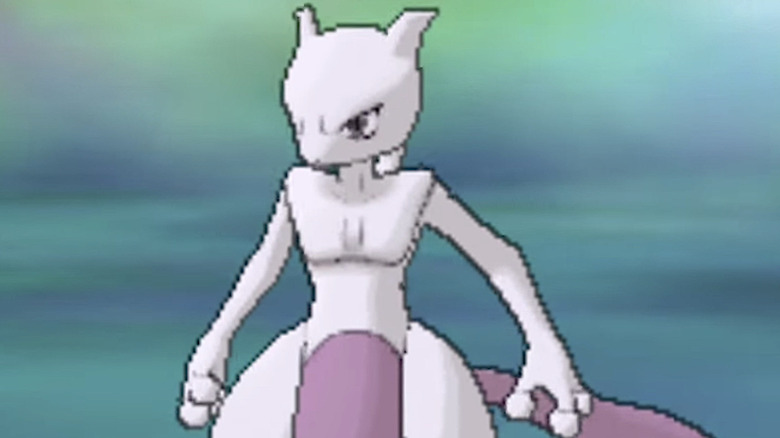Awesome Video Games That Deserve Better Storylines
Video games are more than the sum of their parts. In fact, the most exciting interactive experiences seamlessly weave together believable characters, enthralling environments, and attention-grabbing narratives. But striking that balance can be hard, and sometimes even the most well-received games struggle to convey the story they set out to tell. Let's take a look at some of the most awesome video games that deserve better storylines than the ones they got.
Indigo Prophecy
Quantic Dream's paranormal thriller Indigo Prophecy starts off strong, with protagonist Lucas entering a trance-like state and killing a stranger in cold blood. As the storyline progresses, however, David Cage's cinematic adventure game grows increasingly convoluted, swapping out a supernatural murder mystery for a Matrix-like "chosen one" narrative. Lucas realizes that he has superhuman powers, he was being controlled by an ancient Mayan oracle, and it's up to him to prevent a new ice age. The game finally ends with a standoff between the Illuminati-like Orange Clan, a group of evil A.I. entities called the Purple Clan, and Lucas, who must choose who is worthy of hearing the secret of the universe courtesy of "The Indigo Child."
If that bizarre summary sounds more like the synopsis of a SyFy show's first season than a video game, that's because Cage was hoping to release Indigo Prophecy in an episodic format. Unfortunately, squeezing 12 games' worth of plot onto a single disc means you're bound to lose something along the way—like, say, a cohesive narrative. It's a shame, too, as we would've loved to play Cage's ambitious project the way he'd intended.
The Evil Within
Tango Gameworks' The Evil Within features grotesque creatures and nightmarish environments alongside stealth-heavy gameplay and a punishing difficulty. To make things even more exciting, the survival horror title marked the return of Resident Evil series creator Shinji Mikami to the director's chair. Yet, for all the game does right, The Evil Within just doesn't capture the same spirit that rocketed the Resident Evil franchise to instant acclaim. This is due, in part, to The Evil Within's near-indecipherable plot, which features shifting realities, a Frankensteinian puppet master, and a good ol' dose of human betrayal.
While those might sound like sure-fire ingredients for the next survival horror standard, most of the game's plot takes place behind the scenes (outside of the game's simulated nightmare world)—and in a pair of optional DLCs that dropped nearly half-a-year after the game's initial release. Fortunately, The Evil Within garnered overall positive reviews from critics and sold relatively well, spawning a well-received sequel that ultimately learned from its predecessor's missteps while improving upon its strengths.
The Order: 1886
When a game spawns countless message board threads arguing that it's not as awful as gamers and critics claim, chances are it's still probably not the most worthwhile purchase out there. Ready By Dawn's 2015 supernatural shoot-em-up The Order: 1886 may, in fact, not be as abysmal as some reviews would have gamers believe, but it's still a prime example of a promising game derailed by an emphasis on style over substance.
A werewolf-hunting game that features surprisingly little werewolf-hunting, The Order features gorgeous graphics, a dreary London setting, and an endlessly intriguing world for players to get lost in—for approximately five to seven hours. In a laundry list of gripes, gamers who'd leapt into the shoes of Sir Galahad seemed most disappointed by the shortness of The Order's campaign. According to howlongtobeat.com, the game clocks in at around seven hours (a few hours of which are composed entirely of cutscenes). Couple this with zero replayability incentives, a lack of multiplayer modes, and a predictable plot that squanders its unique setting, and it's no surprise that gamers were up in arms about this game back in 2015. All in all, The Order: 1886 is less offensive for its mediocre story than it is for its developers' claims that a seven-hour interactive movie is worth its $60 price tag.
Bayonetta
For many gamers, there's nothing inherently wrong with putting style over substance. Case in point: PlatinumGames' brutal hack-and-slash gem Bayonetta, which wears its sex appeal—not to mention stylized super-violence—on its sleeve. Borrowing Devil May Cry's campiness and cranking it up to 11, Bayonetta puts players in the gun boots of titular modern-day "Umbra Witch" Bayonetta as she unloads clip after clip into waves of angels, demons, and everything in between. Sure, the game's plot doesn't make a whole lot of sense until the game's final act—and barely at that. But the universally lauded shoot-em-up makes up for its skeletal storyline with a barrage of bullets, blood, and, ahem, anatomically exaggerated butts. Hopefully the Switch-exclusive Bayonetta 3 will give gamers both butts and a better story to boot.
Final Fantasy XV
Back in the late '90s, Final Fantasy games were renowned for their immersive worlds, relatable characters, and epic—if often convoluted—storylines. But after the mediocre Final Fantasy XIII and failed (but successfully rebooted) MMORPG Final Fantasy XIV, the future of the once-beloved JRPG franchise looked bleak. Enter Final Fantasy XV, a tale of friendship and loyalty that was 10 years in the making.
While the game, which brought the series a bunch of new features, was a critical success, gamers were thrown off by its lackluster story, especially considering the franchise's narrative-driven roots. Critics expecting a sweeping narrative were disappointed by a jumbled plot that they considered fragmented and nonsensical. Hopefully the developers manage to strike a balance between character development and a gripping storyline in the inevitable Final Fantasy XVI, if only to prove that the series can continue to learn from its past mistakes.
Metal Gear Solid V: The Phantom Pain
Hideo Kojima is no stranger to convoluted storylines. So it only makes sense that his farewell to the Metal Gear Solid series, Metal Gear Solid V: The Phantom Pain, sets a new standard for hard-to-follow narratives—but not because it boasts a surreal, mind-bending plot like earlier entries in the series. Fans who completed Kojima's open-world stealth shooter soon after its release were quick to point out that the game's ending felt shockingly abrupt. Some claimed that it almost felt as though the game was released in an unfinished state. There's a simple reason for this: The Phantom Pain, which wrapped up development during Kojima's messy breakup with Konami, is quite literally incomplete.
While Konami was quick to squash theories that the now-infamous missing Mission 51 ever existed, Metal Gear Solid V: The Definitive Experience, released in October 2016, suggests that the game originally intended to have four more missions following Mission 46 which, as a whole, would wrap up Snake's farewell tour. The Definitive Experience even included a cutscene from Mission 51 that, while incomplete, contains key canonical information that would have rounded out the game in a much more satisfying way—were it not cut. According to Konami, these sections never made it to any incarnation of the game, and it's heavily theorized that Kojima's conflict with his former publisher, coupled with his unfulfilled demands for a bigger budget, led to their exclusion.
Destiny
MMO games aren't exactly known for their gripping storylines. In a genre synonymous with "the grind," plot typically takes a backseat to gameplay, competition, and marathon-style leveling. But while Bungie's Destiny could've been an exception to this rule, it ultimately proved yet another disappointment in the plot department. This one in particular is a shame, considering the intriguing world of Destiny originally offered a fun, campy storyline written by Bungie veteran Joe Staten and his team. That is, until the higher-ups at Bungie up and killed it in 2013, leaving the developers all of one year to rework it from the ground up.
According to Kotaku's Jason Schreier, who broke the story behind Destiny's messy revision process in 2015, the team "scrapped plot threads, overhauled characters, and rewrote most of the dialogue" in order to accommodate senior leadership's demands. Needless to say, players confused by the game's messy, nonsensical story were up in arms after the news broke—and for good reason: damning rumors that the game had gone through major narrative changes right before launch were proven true.
Star Ocean: The Last Hope
Square Enix's Star Ocean games have always been the awkward middle sibling of JRPGS—full of ambitious ideas and potential, but never quite able to pull them off without a hitch.
The fourth entry in the sci-fi fantasy series, Star Ocean: The Last Hope, chronicles the intergalactic adventures of Space Reconnaissance Force member Edge Maverick as he and his friends strive to find a new home for humanity. A prequel to the earlier installments in the series, The Last Hope offers a promising premise—unfortunately, however, it just couldn't deliver. In fact, the internet seems to share a universal consensus that The Last Hope marked a dip in storytelling quality in a series that had become known for balancing a campy anime feel with serious themes like reality and identity. Even the developers knew something was off.
In addition, fans and reviewers felt as though the cliché-ridden characters—the driving force of the story—were "boilerplate" at best, and "unbearable" at worst. While the game could have presented players with a compelling, dramatic, and mature space opera chronicling the resettling of humanity among the stars, it only managed to provide dialogue, irritating and undeveloped characters, and a storyline straight out of a Saturday morning cartoon.
The Pokémon games
Let's face it: people of all ages might play the Pokémon games, but the cutesy Pocket Monster training sims are meant for kids. In Pokémon's case, the "weak storytelling" blame doesn't quite fall on developer Game Freak as it does the players expecting a game with a character named Jigglypuff to carry an engaging narrative. Regardless of its target audience, however, the Pokémon games have a long history of coupling addictive gameplay with shoddy, predictable, over-simplistic storylines, spanning the franchise's 20-year history. How many times can a 10-year-old and his cuddly pals save the world from a criminal organization before the whole thing just starts to feel stale?
From "evil" villains with juvenile motivations to laughable leaps in logic, Pokémon games contain no shortage of mediocre narrative elements that really put the kibosh on gamers' quests to be the very best. Here's hoping that the success of the more story-driven Sun and Moon, which were critically praised for their more mature and engrossing plots, will prove to Game Freak that players notice when they've put a little more thought into their storylines.

